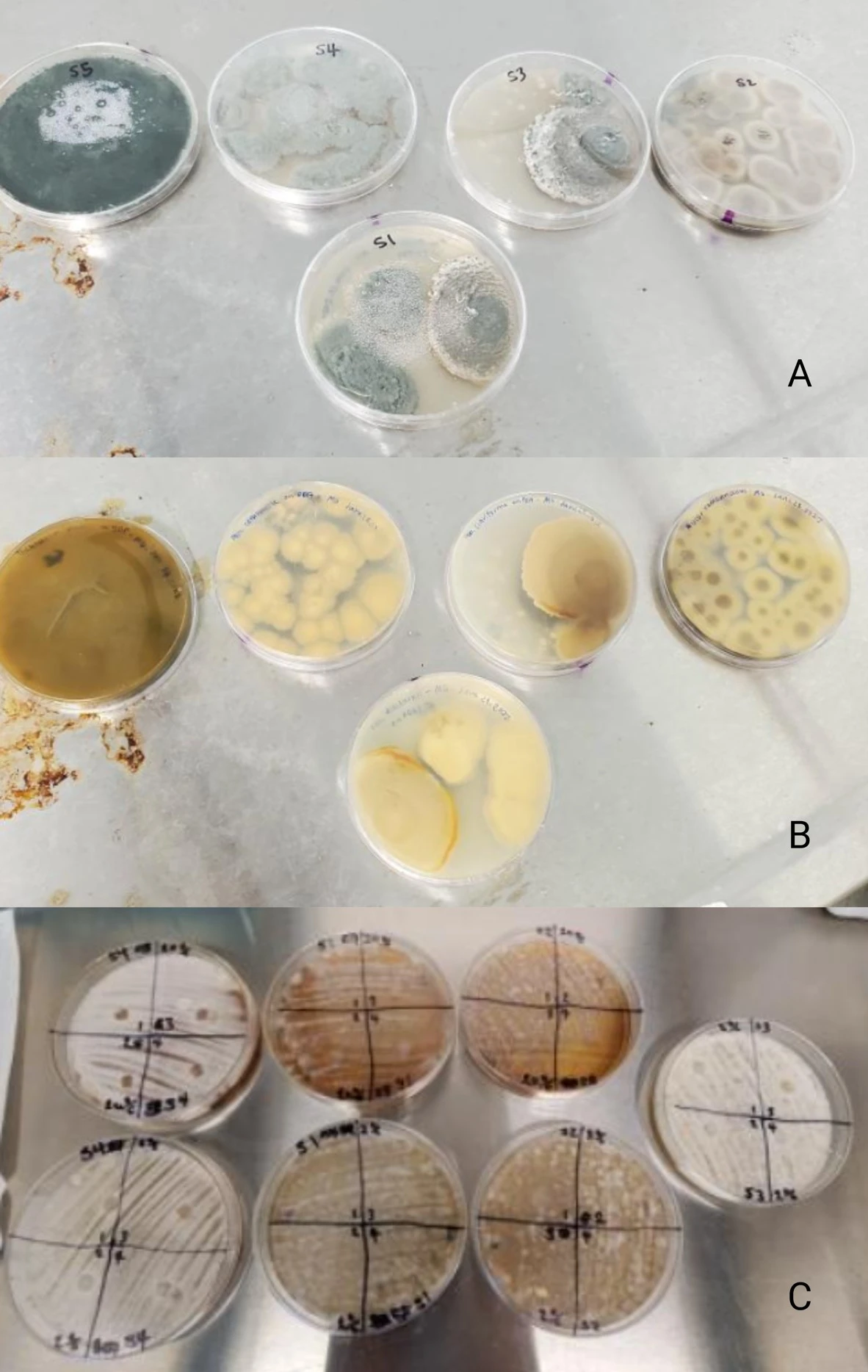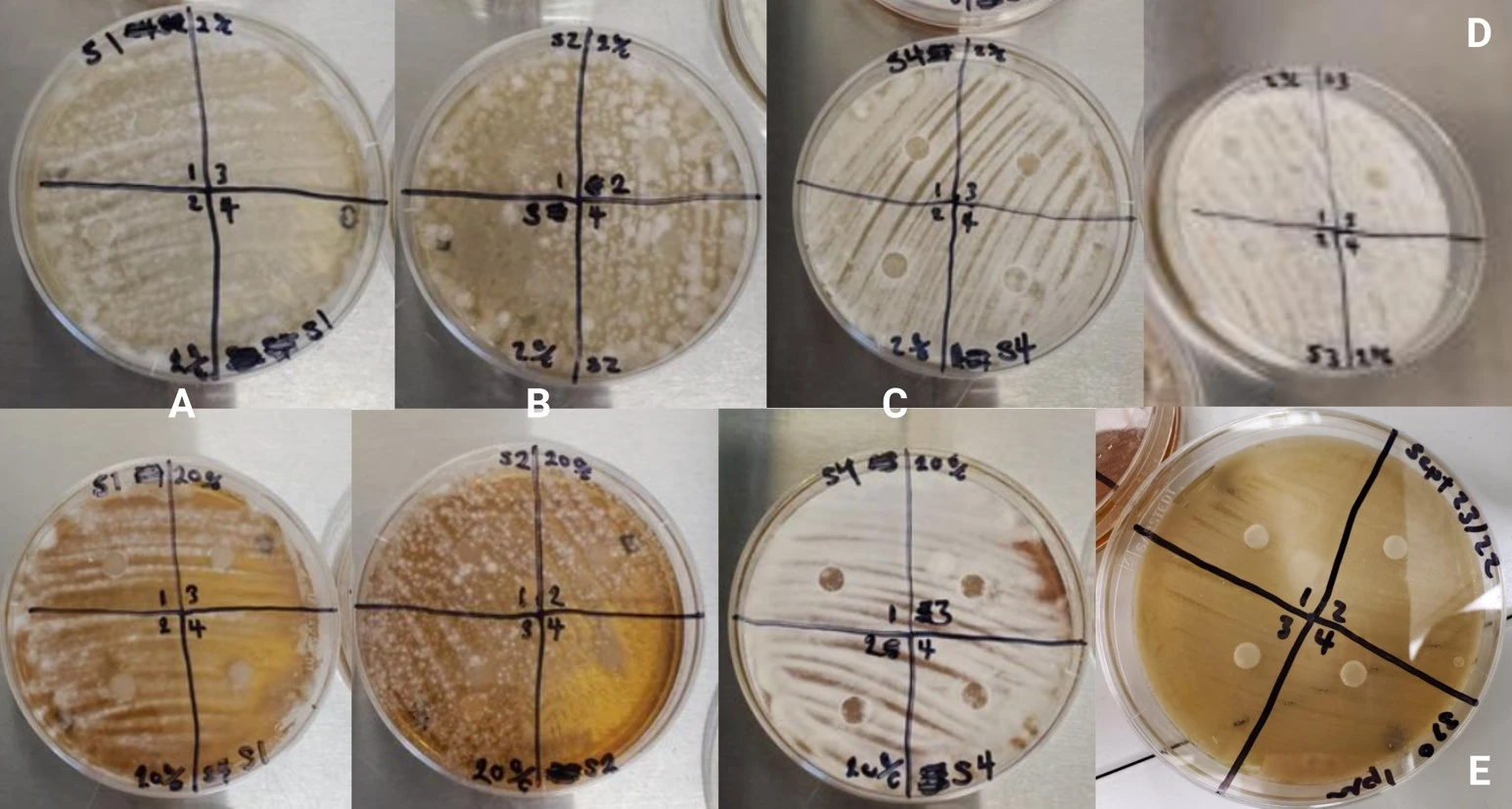Introduction
Fungi is a center point for both of our team and the iGEM team at the University of Calgary. U of C was having difficulty maintaining lab sterility in the presence of their fungal species, causing results of all kinds to be affected. For these reasons, and others, they reached out to our team for advice and to offer a collaborative relationship. After a series of conversations it was decided that our team would perform disc diffusion assays, while U of C would perform Molecular Dynamics Modeling on some speculative transporter proteins for our toxin.
Our team speculated that the lipopeptide Bacillomycin D would be capable of self secretion given its chemical properties. However, we also decided that the use of transport proteins in our biosensor platform could prove useful if our initial speculation failed. Due to the complexity of our transport proteins, it was decided that docking simulations, not molecular dynamics, would be the optimal analysis tool. Since we were working with one another for nearly the whole season on a series of objectives; each having the capacity to radically alter the future steps in our respective projects, we re-classified our relationship as a partnership.
Disc Diffusion Assays/Kirby Bauer Tests of Inhibition
Three KB tests were performed throughout the season. Results from the first test proved the same as our second attempt and are therefore not presented here. Furthermore, much of the data was lost/corrupted in a data transfer process. The remaining two experiments demonstrated no visible inhibition zones at any nisin concentration, Figure 2 A-E. After careful consideration, we concluded that nisin inactivation may be the most critical, and likely source of error. Nisin can become inert after light exposure, and is affected by temperature fluctuations (prolonged room temperature for example). Steps were taken to maintain the nisin in its optimal environment, however, exposure to sunlight and room light did occur while preparing discs for plating. In totality however, we concluded that there is a low probability of nisin deactivation and are confident in our results.


| Quadrant 1 - Stock nisin | Quadrant 2 - 1/10 nisin | Quadrant 3 - 1/20 nisin | Quadrant 4 - negative control |
|---|---|---|---|
| 100 μL nisin | 10 μL nisin + 90 μL ddH₂O | 5 μL nisin + 95 μL ddH₂O | 100 μL ddH₂O |
Effect on Our Project
Interested readers can find the docking results from U of C on their wiki.
Their results demonstrate that bacillomycin D is capable of binding to all three speculative transport proteins with a similar affinity. Since our project did not get to the point where transporters were necessary, predicting how this information could have been useful is difficult. It is definitely the case however, that this modeling greatly narrowed the scope of our protein search, thereby saving our team a great deal of time had we reached this point. Furthermore, the results provide a quantitative comparison between the predicted and in-vivo effect of Bacillomycin D transport; narrowing optimizations that may have been required.
Timeline of Partnership with Calgary
June
27
- Contacted by U of C - projects both related to fungi - possibility for collaboration
28
- Zoom meeting - collaboration avenues discussed
-
U of C:
- Fungal contamination resulting in poor experimental outcomes
- We (U of A) offered to aid in their fungal susceptibility tests
-
U of A:
- No project modeling resulting in (most likely) poor predictions for toxin secretion systems
- They (U of C) offered to aid us given their dry lab teams expertise in protein modeling
30
- U of C - propose to send fungal and inhibitor compound samples to the U of A for experiments
- U of A - propose to gather and send protein data for modeling - non-specific at the time
July
12
- Transport of fungal and inhibitor arranged
14
- Further discussion of protein modeling - molecular dynamics between toxin and transport protein discussed
22
- Fungal and inhibitor samples arrive in edmonton (on U of A Campus)
26
- Molecular Dynamics testing confirmed, specific data requested - transporter and toxin protein info
August
2
- U of C Kirby-Bauer disc diffusion protocol shared with us
11
- We share an updated protocol (from our advisors) for the kirby-bauer assay with U of C
17
- We begin attempting to grow and sub-culture the U of C fungal samples
18
- We share a variety of FASTA files for various proteins with the U of C team
23
- U of C starts performing molecular dynamics tests
24
- Zoom meeting with U of C - updates for Molecular Dynamics and Kirby-Bauer progress
- Sub-cultures were obtained (for most samples) first kirby-bauer test was run
29
- First Kirby-Bauer test results sent to U of C team
- Results were poor - had to optimize growing conditions
- Performed a second Kirby-Bauer experiment with altered growth conditions
31
- Second Kirby-bauer test results sent to Calgary teams
- Was able to provide a variety of optimizations to their growth protocols for significantly increased lawn growth rates
September
13
- Second Set of Kirby-Bauer experiments proposed - testing Nisin against Candida albicans
23
- Candida Kirby-bauer tests started
28
- Candida Kirby-bauer test results sent to Calgary team
October
10
- Met with Team Calgary over Zoom to discuss partnership and gather group images for the Wiki